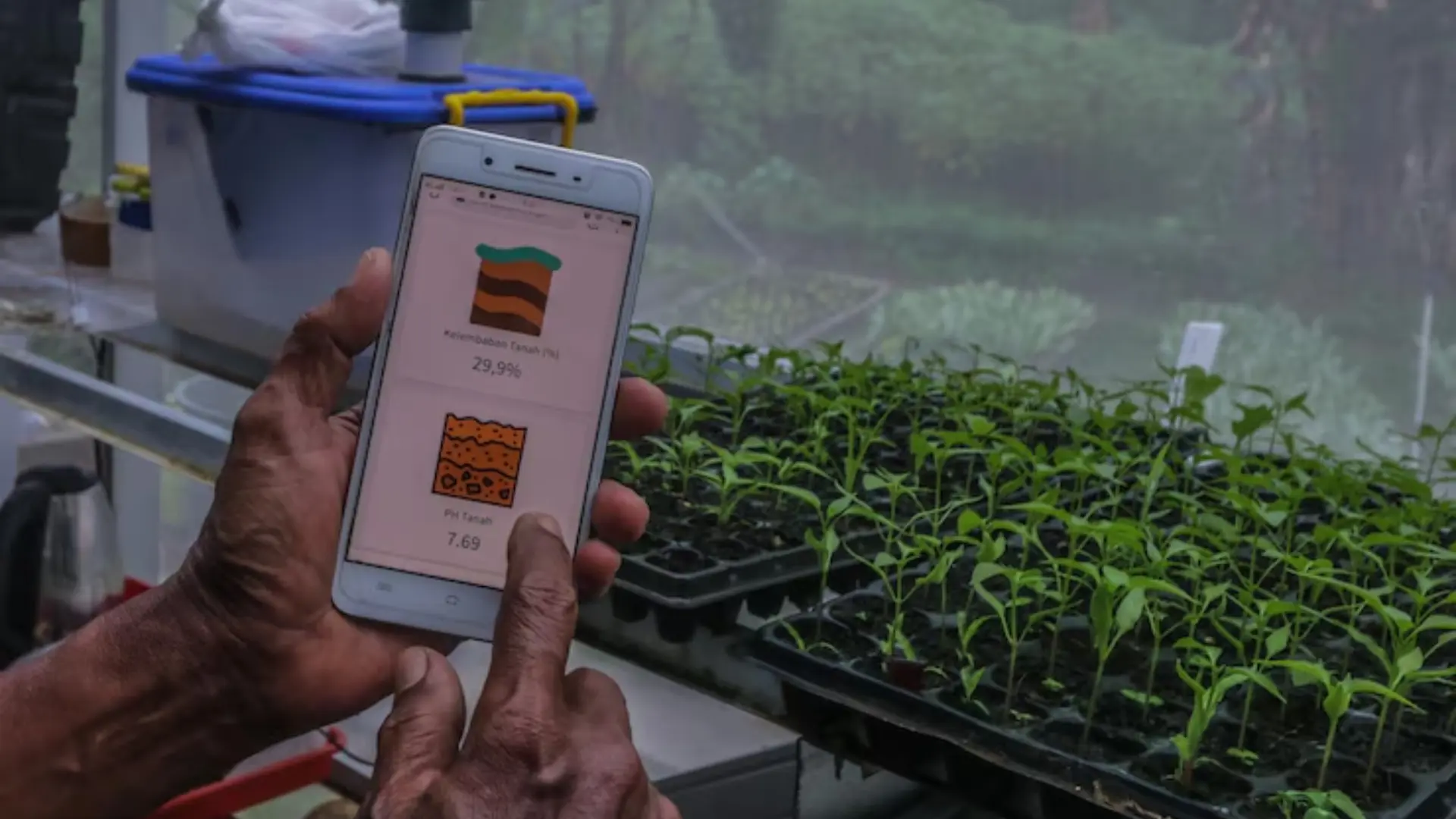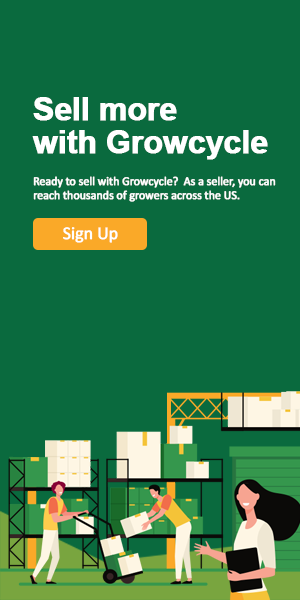
Advanced Solutions for Efficient Crop Production and Post-Harvest Automation
In the world of modern agriculture, "working smarter, not harder" is a slogan that evokes a life-or-death struggle. From unpredictable weather to labor availability, contemporary growers face challenges that won’t be solved with old-school solutions. Welcome controlled environment agriculture (CEA), automation, and smart technology—the new armory that is turning once simple farms into well-oiled machines.
- What: Hydroponics, automation, post-harvest solutions, and other cutting-edge technologies are revolutionizing crop production with improved efficiencies, labor reductions, and resource maximization.
- Ideal For: Growers seeking increased yield, high-quality product, and streamlined post-harvest processes through automation and controlled environments.
- Key Players:
- AmplifiedAg: Hydroponic systems optimized for the production of high-density crops in multiple locations.
- EZ Trim: Automation post-harvest, such as the Trifecta system, to trim and sort.
- Koala Trimmers: Handheld ergonomic trimmers, such as the Joey, for fast and dry trimming.
- Mobius: Solvent-free systems like the M100 for high-quality production.
- Pro Tip: Take advantage of automation and smart environmental control to get better yields and more consistent production with lower labor overhead.
Companies, including AmplifiedAg, Mobius, EZ Trim, and Koala Trimmers, demonstrate that automation and innovation can make even the most challenging farm days more efficient. Be it fruit and veg grown in shipping containers, automating post-harvest processes, or precision trimming, these tech pioneers are re-imagining what it takes to farm efficiently, from seed to sale.
Optimizing Crop Production with Cutting-Edge Technologies
Growth has long been the best thing about farming, but today it’s also the thing that makes it the worst. With growing concerns about food security, environmental impact, and local sourcing, new technologies are redefining the when, where, and how of what people grow.

Modern agriculture is embracing controlled environments, real-time data, and automation to take the guesswork out of farming. No longer is it all about working the land; now it is about mastering the environment, squeezing every bit of input and output with precision.
Sustainable Farming Through Indoor Solutions
Indoor farming isn’t just a trend—it’s a game-changer. Hydroponic container farms help you grow your fresh fruits and vegetables all year long, no matter the weather, no matter your location, and no matter the condition of your soil.
These modular systems offer consistent production in urban centers, rural deserts, and everywhere. They slash water use, eliminate the most harmful kind of runoff, and significantly reduce transportation emissions by pulling the farm closer to the consumer.
But it’s not just about sustainability; they create community-driven impact too. Local schools, nonprofits, and food hubs are partnering with the farms, not just to grow food, but to teach, empower, and involve.
Fully Integrated Farm Platforms
Advanced farming systems are intelligent ecosystems. A contemporary modular platform that seamlessly integrates hardware, software, and environment control into one convenient, easy-to-use system.
With advanced management tools, growers can track plant health, nutrient concentration, temperature, and humidity—all from a central dashboard. The result? More fit crops, larger harvests, and fewer resources.
Some platforms now leverage machine learning algorithms to analyze trends in crop development, environmental data, and nutrient uptake, allowing predictive insights and automated decision-making that optimize every stage of growth.
At the centre of this system, you'll find powerful farm management software to put operators in control of every parameter. Whether it's automating irrigation or monitoring harvest weight — the same data tracked by this smart wheelbarrow — it's farming with eyes everywhere and decisions backed by data.
Post-Harvest Challenges and the Need for Automation
The labor doesn’t end once crops are raised. In reality, post-harvest processing is one of the most costly and frequently neglected phases of production. Trimmings, sorting, and packaging can all deliver manual bottlenecks that restrict the speed, drive up costs, and compromise product quality.
As farms grow and demand from consumers increases, depending exclusively on hand labor is no longer sustainable. Automation provides a smarter, quicker way to complete those post-harvest jobs without forsaking caution or accuracy. From hastening sorting lines to minimizing waste during trimming, automated systems help producers keep up while maintaining quality.
It’s not just filling in the gaps — it’s reimagining the entire workflow from harvest to market.
Labor Constraints and Manual Processing Issues
Workers with expertise are more difficult to find — and to pay. The manual trimming, sorting, and packaging being done by workers involves long hours, repetitive movements, and skill. The result is that farms are frequently plagued by uncontrollable quality, employee burnout, and turnover.
Seasonal labor shortages may postpone a harvest and lead to bottlenecks that impact a delivery schedule and the profitability of a grower. And even if the workforce is available, manual work will likely lead to errors being made during processing, resulting in variations in the quality of the processed product and higher wastage.
Automation is the solution to these problems, with predictable and repeatable results. Machines, after all, do not get tired or take sick days. What they do offer is a certain quality and efficiency, a level of competence that doesn’t fluctuate and can be scaled up on a farm without being hindered by off-farm labor constraints.
Trimming and Processing Solutions That Save Time and Labor
Time is money in agriculture, especially during the harvest season. Manual cutting and sorting wasted time and tied up labor, which could have been spent working on other aspects of the business.
This is where the automation of trimming and processing is useful. Producers can reduce production time and improve speed, accuracy, and quality of the product by replacing scissors and hand-sorting tables with highly efficient and scalable machines.
No matter the scale — from a small boutique grow to a large commercial setup — the right trimming tools can cut down bottlenecks and get your product out the door faster. It’s not just doing things faster, but doing things smarter.
Streamlined Harvesting with EZ Trim’s Trifecta System
The Trifecta System is a 3-Part harvest solution from EZ Trim that will revolutionize your post-harvest process with ease. The range consists of the Bud Bucker, the Bud Trimmer, and the Bud Sorter, all designed to address a certain part of the process and be utilised together as a combined unit.

Each machine is designed to exploit a specific stage of the process:
- Bud Bucker: Strip buds from stems in a fraction of the usual time!
- Bud Trimmer: Trim wet and dry material effectively without destruction to your delicate merchandise.
- Bud Sorter: Sorts material by size to minimize manual grading.
But those are just the machines. EZ Trim provides on-site installation, project management, and consulting for maximizing your existing workflow. They personalize their solutions for you, whether you’re a tight crew or scaling up.
High-quality Trimming Tools for Precision and Efficiency
Precision is everything when it comes to trimming. High-quality handheld trimming tools are revolutionizing the harvesting process. Finally, a handheld tool that is affordable and small, with the capability of an electric machine at the tip of your hands. Ideal for people who want to produce top-quality stones without the lugging around of a large tumbler.
Their lightweight, ergonomic design allows for detailed work without fatigue. Whether you're trimming big, dense buds, spiraling flowers, or anything in between, using the trimmers by hand allows you to pick up speed and maintain precision, without over-trimming or wasting effort.
Some of the numerous benefits of high-quality handheld trimming equipment are:
- Precise adjustment when trimming to the correct length
- Comfortable grip to reduce wrist and hand strain
- Strong, long-lasting materials built for daily use
- Great for maintaining the natural shape and form of the bud
These tools are a smart alternative for cultivators looking to enhance the trimming process without making an all-out industrial jump. They’re a perfect balance between quality and efficiency, one clean swipe at a time.
Precision Meets Portability with Koala Trimmers
The signature handheld electric trimmer of Koala Trimmers is Handheld Joey. Short in stature, yet long on power, Handheld Joey is for finishing, where looks and quality matter.

Post-harvest, after drying, Joey removes both sugar leaves and small fan leaves with ease. It works best on big, tight buds while still on the stalk, maximizing its action and speed of action.
Key highlights:
- Ideal for dry trimming
- Replaces scissors and bulky tumbler trimmers
- Handy, ergonomic, and simple to use
- Best for preserving bud integrity while maximizing output
And, because Koala Trimmers appreciate the power of trust, they have built this unit to last with great parts and minimal maintenance. As long as you regularly clean him and store him right, Joey will keep on keeping on.
Whether you’re sweating it out in a tight spot or clinging to meticulous detail throughout an entire operation, Joey combines portability with power in a single, streamlined package.
Koala Trimmers is changing the way you trim— with a little fun, a lot of innovation, and zero compromises on quality.
Scalable Automation for Commercial Cultivation
Scalability is not a luxury in commercial farming and plant processing. And as your demand grows, you need your operation to do the same, providing seamless performance without bottlenecks or breakdowns.
Scalable automation allows producers to maintain quality while increasing volume. High-capacity modular systems allow for large-scale expansion of processing lines without the need for a new line profile. From washing stations to dewatering modules and around-the-clock cooling systems, the latest setups make it possible to exert exacting control of production-related environmental factors such as airflow, humidity, and storage conditions.
Touchscreen interfaces, automated cycle programming, and real-time sensor monitoring help simplify use and minimize time spent waiting for parts. It’s all these new capabilities that not only bring efficiency, but also deterministic outcomes, which are important for regulatory reasons and product consistency.
With the right scalable technology in place, commercial cultivators and processors can expand their operations in response to the growing market demand — and do so without sacrificing accuracy, safety, or product quality.
Automated Extraction Excellence with Mobius
Mobius has reinvented solventless processing with a system that focuses on speed, scalability, and smart design, giving producers everything they need to produce at the scale the market demands.

One of their products is the Mobius M108S Trimmer, which is engineered for large-scale trimming operations. It delivers scissor-like precision at industrial speed, thanks to cutting-edge technology that mimics hand-trim quality. With industry-leading feed rates, minimal material loss, and robust construction, the M108S is the ideal choice for professionals seeking high-volume, automated trimming without compromising quality or consistency.
Another is is the Mobius M100 Solventless Wash System is a smart, scalable solution for commercial solventless extraction that provides maximum productivity while also providing the utmost process control.
This fully integrated, multi-vessel system connects a 200-gallon pre-chill reservoir, 100-gallon wash vessel ,and 100-gallon water reclamation system — all linked via a closed-loop cooling circuit for consistent performance and limited resource waste.
Designed for batch sizes ranging from 15-60 lbs, the M100 is ready to grow along with your production needs, bringing automation and efficiency to high-output environments.
Key Features:
- Unified Multi-Vessel Design: A 200-gal cooling, 100-gal washing, and 100-gal recirculation tanks are built in and sustain constant running conditions throughout each cycle.
- Automatic Wash Sequences: Store, save, and execute repeatable programs with a touch-screen interface for consistent results.
- Smart Sensor Technology: The water level and temperature are monitored in real-time for the best washing every time.
- Fast, Efficient Hash Collection: A free-rolling collection module with built-in dewatering streamlines the process, up to 5x faster than manual methods.
- Scalable Operation: The modular collection units can be combined and exchanged during the cycle, providing the possibility for continuous production.
Bridging Innovation and Sustainability
It’s a fast-moving sector, and while the world’s farmers must find innovative ways to feed a growing global population, everyone is also trying to work toward preserving the environment and minimizing the impact of their operations. Old farming methods are giving way to high-tech strategies for planting and tending to crops, which can help ensure food gets to consumers more efficiently. In such changing conditions, total farm solutions become increasingly important to meet the requirements both in accuracy and price and quality optimisation of the production.
In times of environmental apprehension and resource constraints, the need for smarter and more sustainable farming has never been higher. Automation, data-driven decision making, and a controlled environment are opening up opportunities for growers big and small to provide not just for the demands of today, but also for those of tomorrow as well.
Revolutionizing Crop Production with AmplifiedAg’s Integrated Solutions
In a world where food remains an urgent concern, the time for innovation in agriculture has never been greater. AmplifiedAg is fueling a revolution in the way the world grows food by creating comprehensive farming systems that are scalable, enabling communities, schools, businesses, and organizations to grow fresh, healthy food year-round.

At the core of their product line is the hydroponic container farm—repurposed shipping containers modified to grow locally sourced, high-quality produce in a controlled, pesticide-free environment. A carpet of modular farms could be installed in urban centers, rural towns, and disaster zones, and serve to construct a disintermediated food network capable of feeding local populations in times of crisis.
All container farms will have the latest technology available to maintain a consistent environment, and each of those variables is controlled:
- Stacked hydroponic channels for high-density plant growth
- Precision environmental control of temperature, light, and airflow
- Nutrient delivery systems for optimum plant health
- Farm management software for the real-time control and automation of agricultural processes
What sets AmplifiedAg apart is its complete support ecosystem. Their pros help growers from start to finish, from site planning and installation to horticultural consulting and food-safety guidance.
The Future of Controlled Agriculture and Automation
The future of agriculture is technology and automation. So, the world that people are living in today, with these global issues of climate, global population growth, and the safety of food, they have a world that wants as much control over everything as they can.
Automation is transforming the controlled environment agriculture (CEA) space. Through the use of advanced technologies such as hydroponics, automation solutions, and data analysis, people can now farm in the city, in remote areas, even indoors, 365 days a year. They may allow maximisation of resources and minimisation of waste in the production of good food from low-cost sources.
This is not just about higher yields or lower costs. It’s a vision of a more sustainable, more equitable way to farm. By automating parts of it, you can allow people to grow food nearby, reducing the carbon pollution of travel and depletion. It’s about future-proofing agriculture and ensuring that everyone, everywhere, has access to sustenance: locally grown nourishing food.
Merging Technology, Data, and Community Impact
It’s efficiency that automation usually gets credited for, and it’s only the very least interesting portion of what makes automation powerful. That's because the value of automation is actually its sustainability and in the community itself.
These same techniques will be helpful in agriculture for farmers who are able to use data-driven approaches on the farm in their field operations, and become smarter decision-makers in terms of crop health and resource conservation. Applying sensors and AI, farmers can manage soil moisture and nutrient levels to make the best conditions for their crops to grow — and waste the least, too.

But it’s not just the tech — it’s the person. Policymakers can use policies that are more automated to enable these disadvantaged communities to have access to the infrastructure required to grow fresh food where it is consumed. It is an image of fairness that turns farming into a communal enterprise, ensuring that food security is a right for all.
In such localities where it is difficult to access healthy sustenance, robot growing systems offer reliable and economical solutions that can contribute to eliminating problems in the terrain of food distribution logistics and promote environmentally friendly practices.
Creating a Comprehensive Farm-to-Market Ecosystem
The opportunity is not only to automate growing crops, but to construct an entire farm-to-market ecosystem. You can automate from planting all the way to harvesting, and clear up to packaging to ensure consistent quality and performance across the continuum.
The growing systems (hydroponic farms, for example), are designed to give the plants everything they need to thrive and automation, sense and precision trims everything, so the quality remains high, and crops are handled as little as possible prior to processing. This robotic solution minimizes the human factors related to accuracy and throughput, eliminating the chance that a defective product reaches the marketplace.
Maintaining safe, consistent quality food products is just as much about quality as it is about growing and trimming. Automated technologies can monitor anything from temperature to packaging to make sure the final product meets consumer tastes and regulatory standards.
When these various systems are integrated, they form a complete and integrated process that enables people to ensure that every step of the production process is optimized for efficiency, sustainability, and quality control. This approach maximizes farmers’ yields and minimizes waste, even as consumers get the freshest, safest food.
FAQs
1. How does automation improve crop production efficiency?
Agricultural automation is expected to automate the fertilizers, pesticides, and all other industries, resulting in less human/labour dependency, reducing human error and efforts, and increasing crop efficiency and management. Automating the measuring of the environment inside a hydroponic and post-harvest trim environment will allow for significantly closer measurement and control of the environment in delivering higher yields, product quality, and lower waste.
2. What are the environmental benefits of indoor farming solutions like hydroponic container farms?
The crops they are cultivating indoors — in other words, hydroponic container farms — use only a tiny fraction of the water of traditional farming. They help reduce deadly runoff and waste less fuel on transportation by keeping food closer to urban centers. Second, they can be set up on empty soil, suitable with low-quality weather, providing food security with the least environmental impact.
3. Can automation help with labor shortages in agriculture?
Yes, automation is one way to address farmers’ labor challenges. Since farms are managed by systems of automation that perform work like trimming, sorting, and packing, the farms are able to keep humming along even without a great deal of labor. The machineries thus reduce the labor costs while enhancing the supply of high-quality and uniform final products versus the switching outputs.
Summary
Crops are being effectively grown and harvested automatically through new technology, and this has been helping in the agricultural revolution. From hydroponic container farms to precision-cutting systems, automation is altering the way people grow, process, and ship food. Over time, farms might become more productive and have cheaper labor, and be more sustainable, with the deployment of these technologies.
Forward-thinking companies such as EZ Trim, Koala Trimmers, Mobius, and AmplifiedAg are spearheading the industry with innovative products that streamline the farm-to-sale system. In addition to aiding farmers in their struggle against constraints and a shortage of workers to execute all the work that needs to be done on the farm, these companies are helping to create a more sustainable, fairer world of food in the years to come. As they become more productive through automation, they’re serving both the communities that benefit from that additional productivity and future generations who will have the food they need to survive.
Disclaimer: This material is for informational purposes only and should not be relied on for legal, medical, financial, or other professional advice.
Sources:
Research Gate - Cutting Edge Technologies for Developing Future Crop Plants
Science Direct- Automation and digitization of agriculture using artificial intelligence and internet of things


